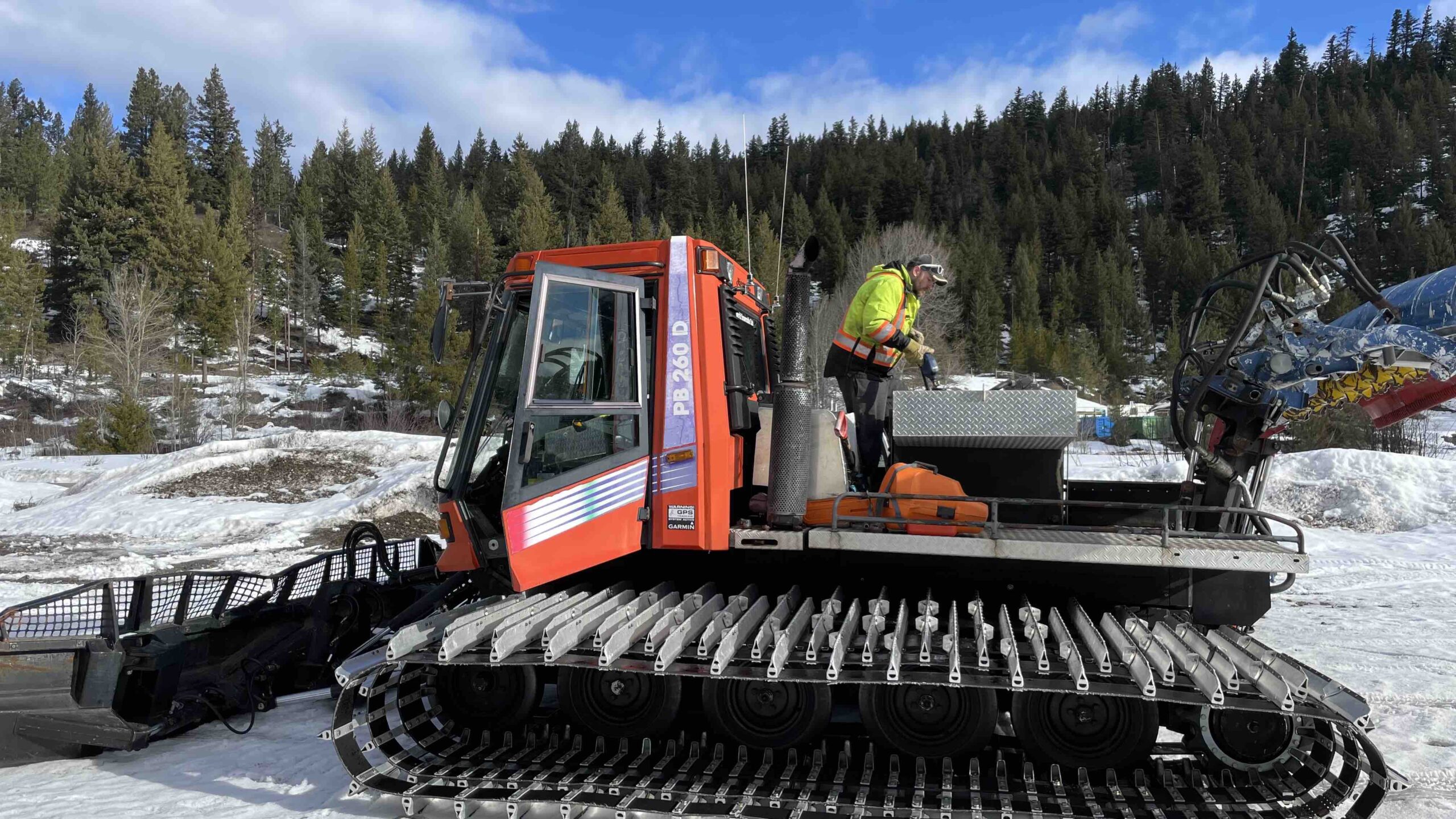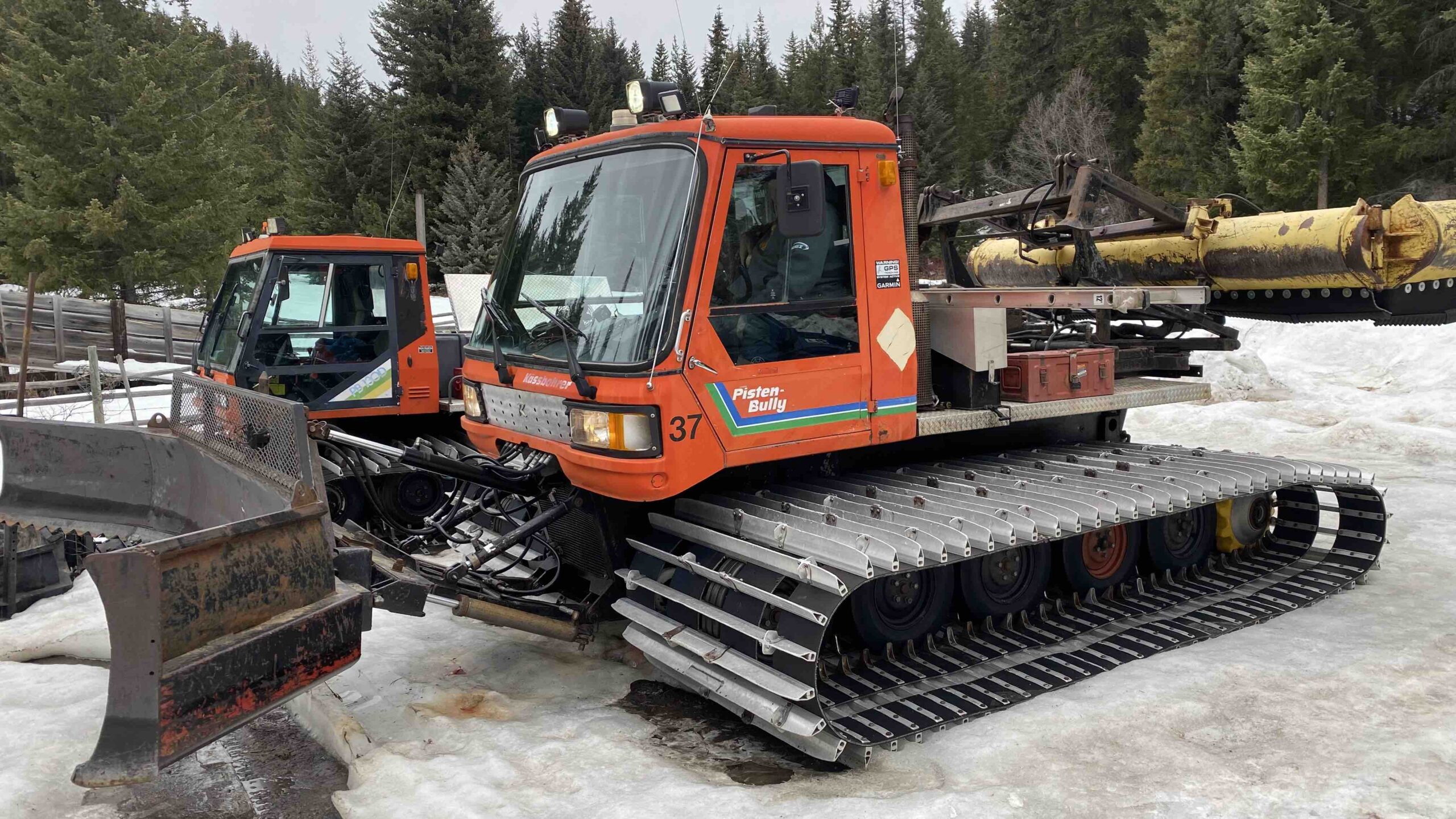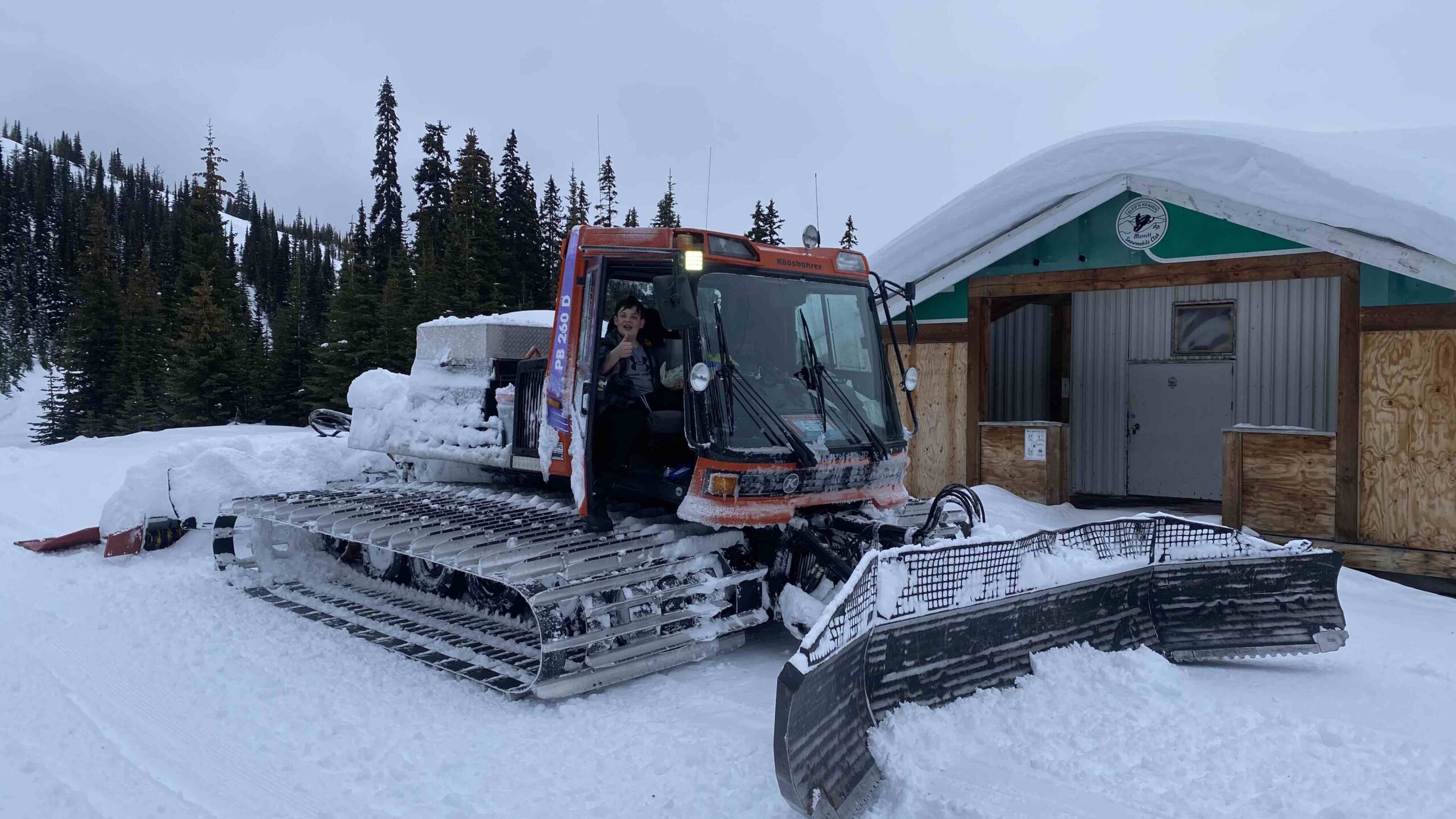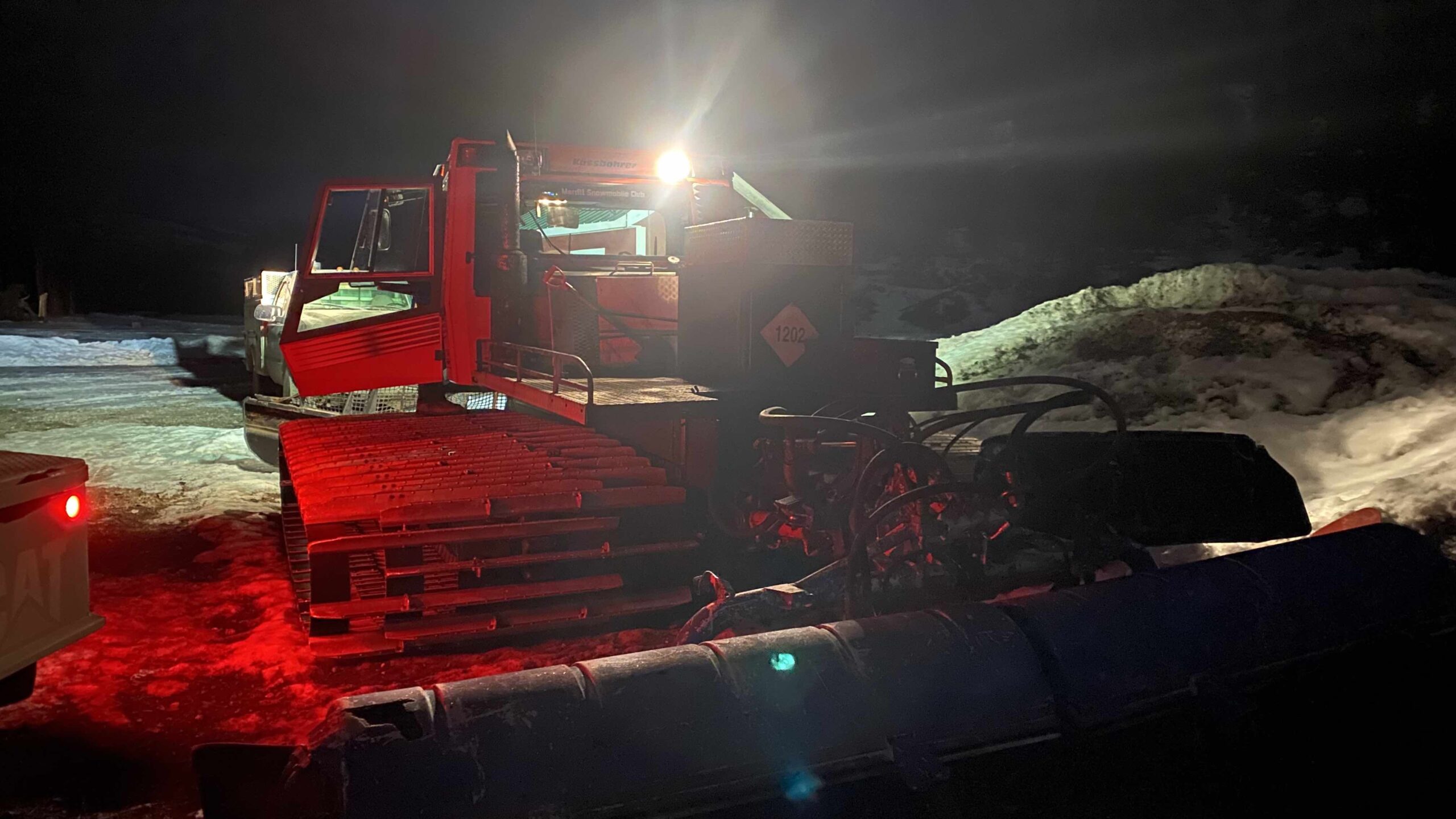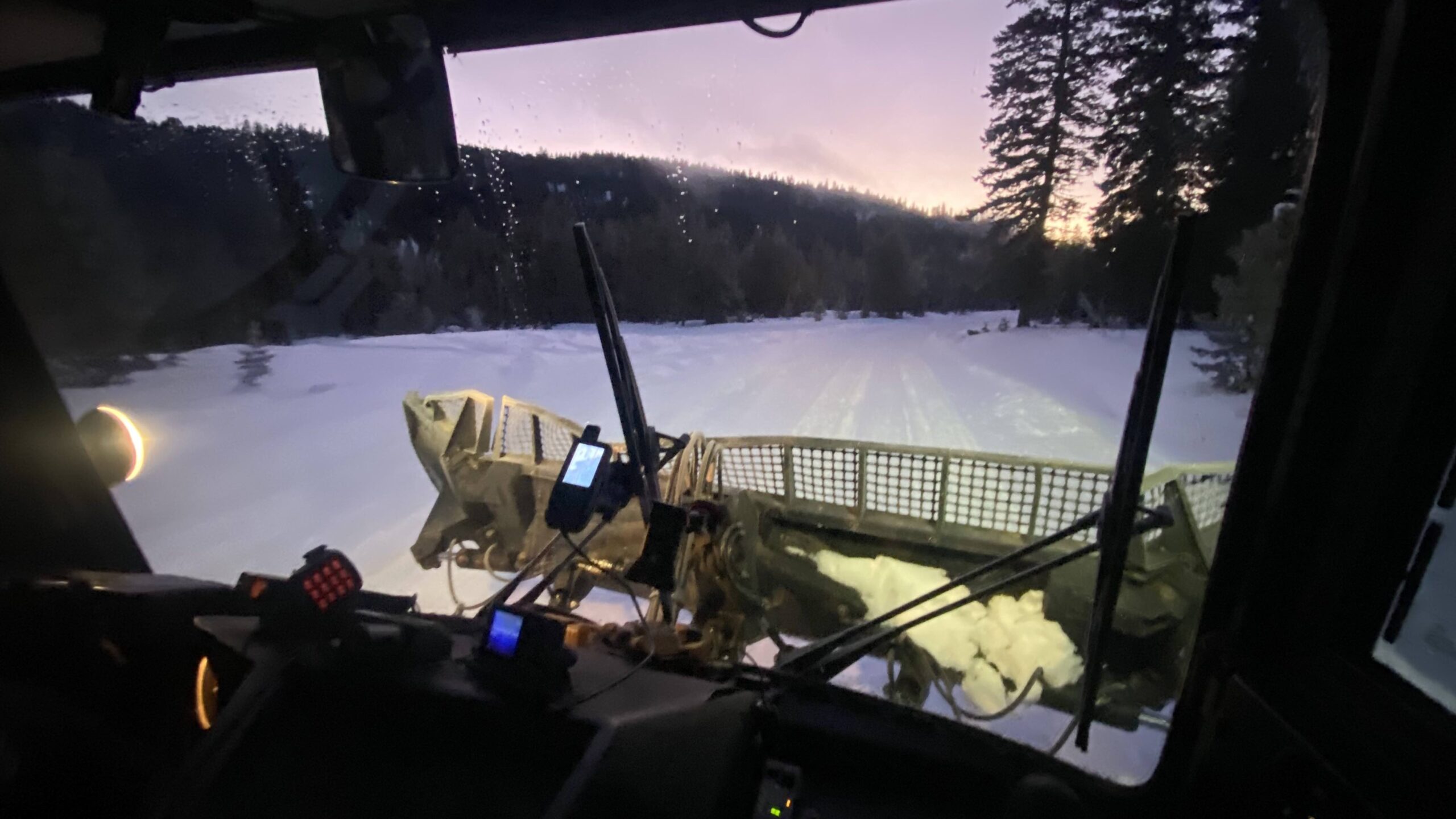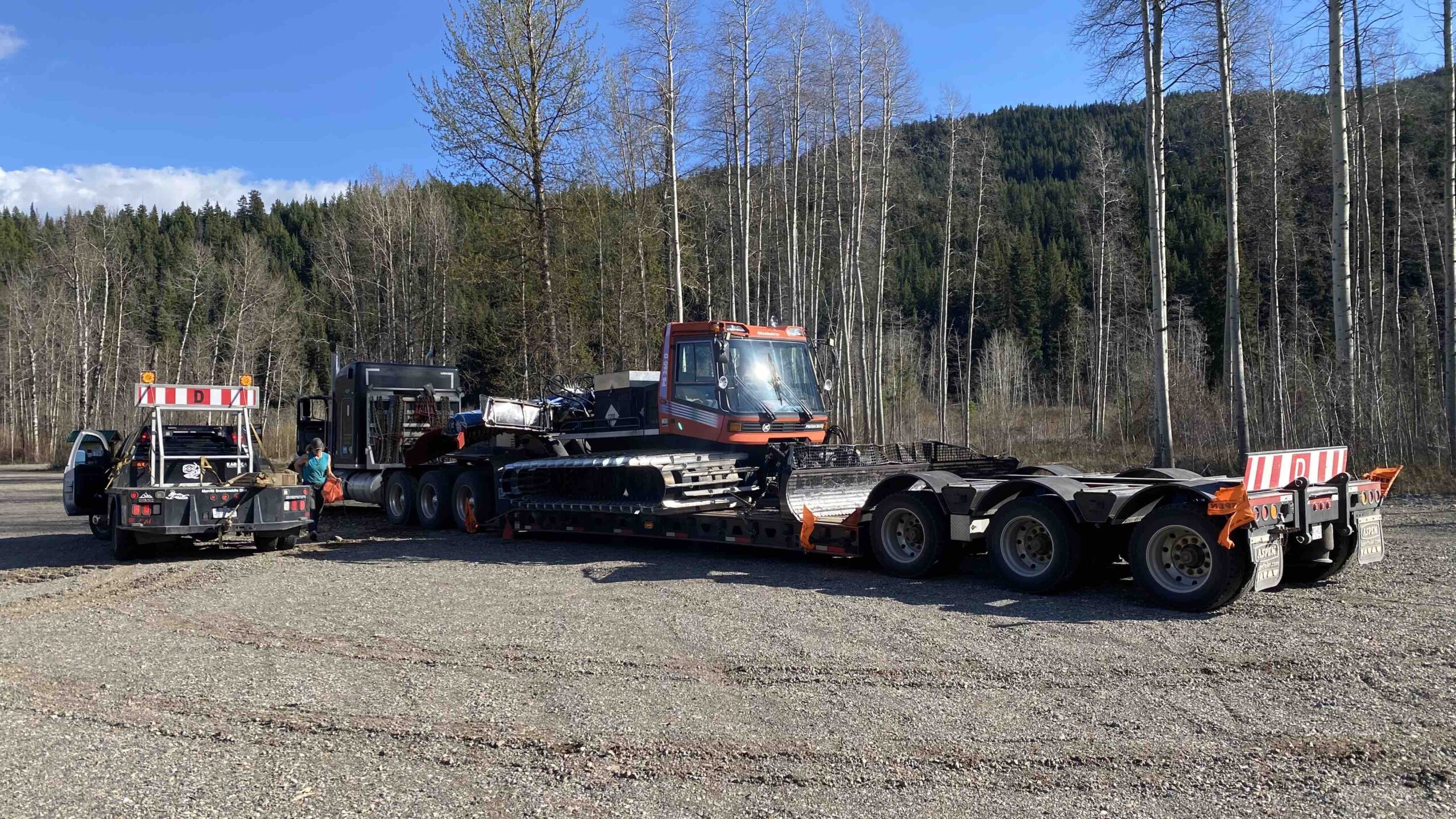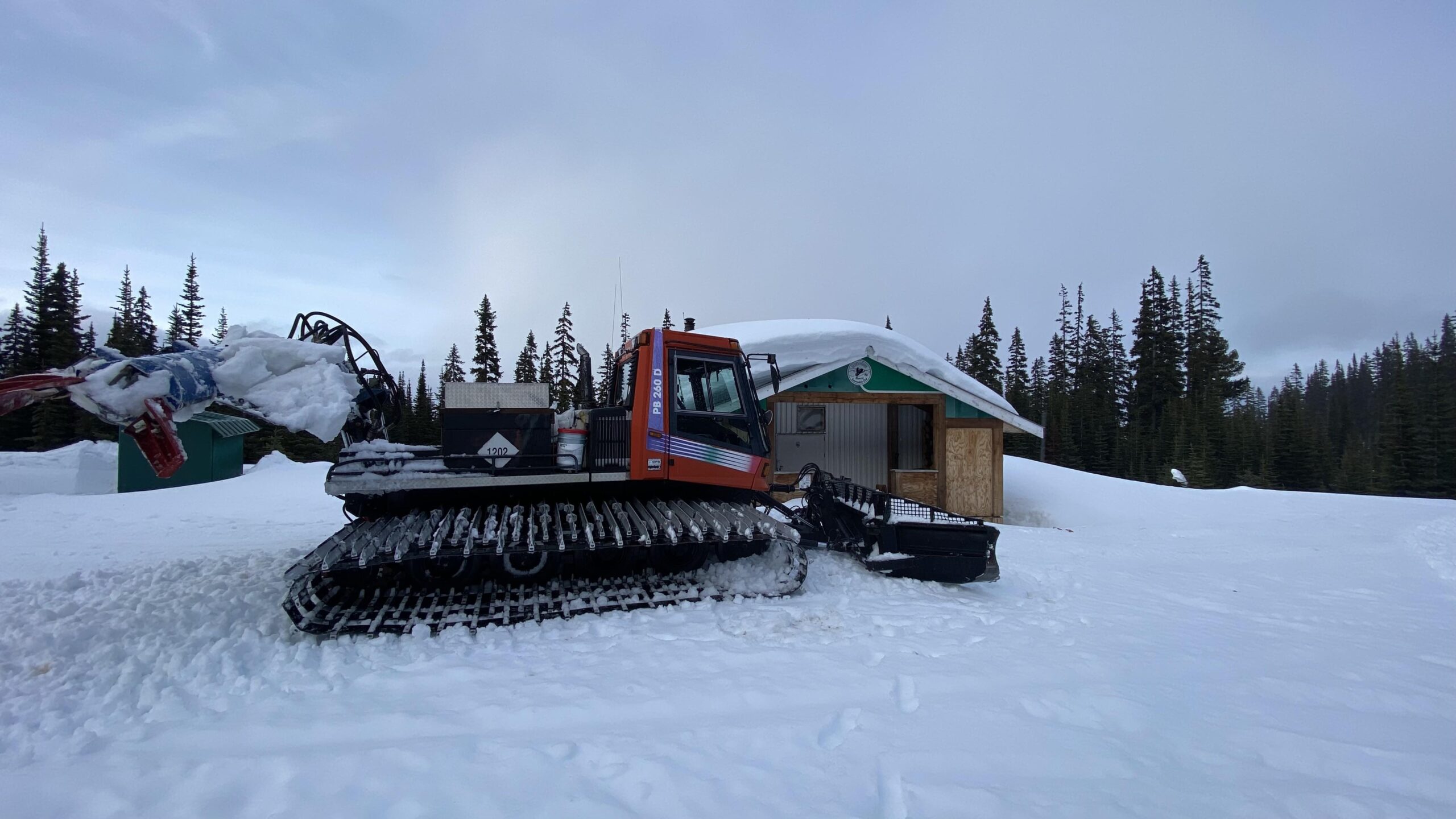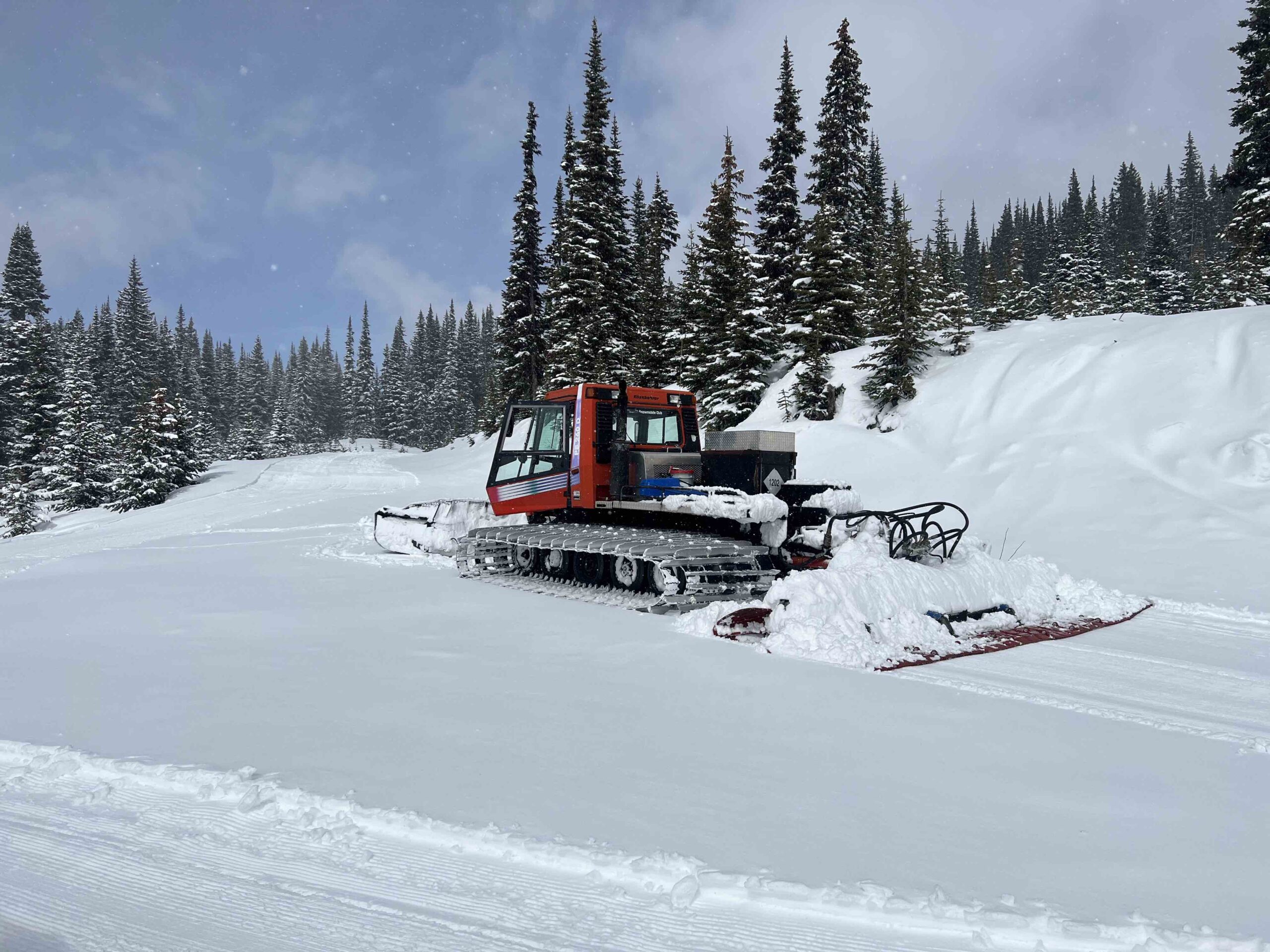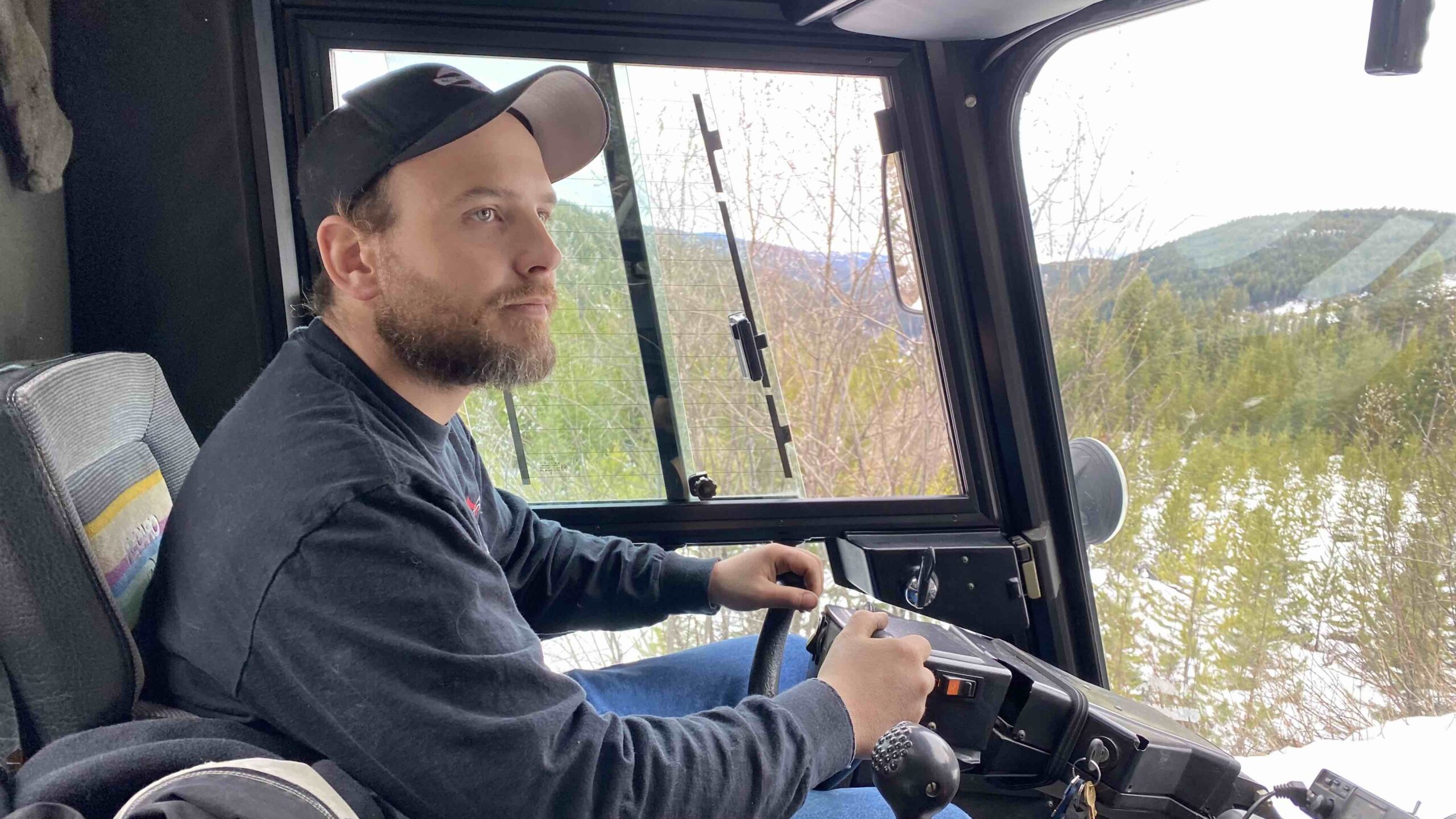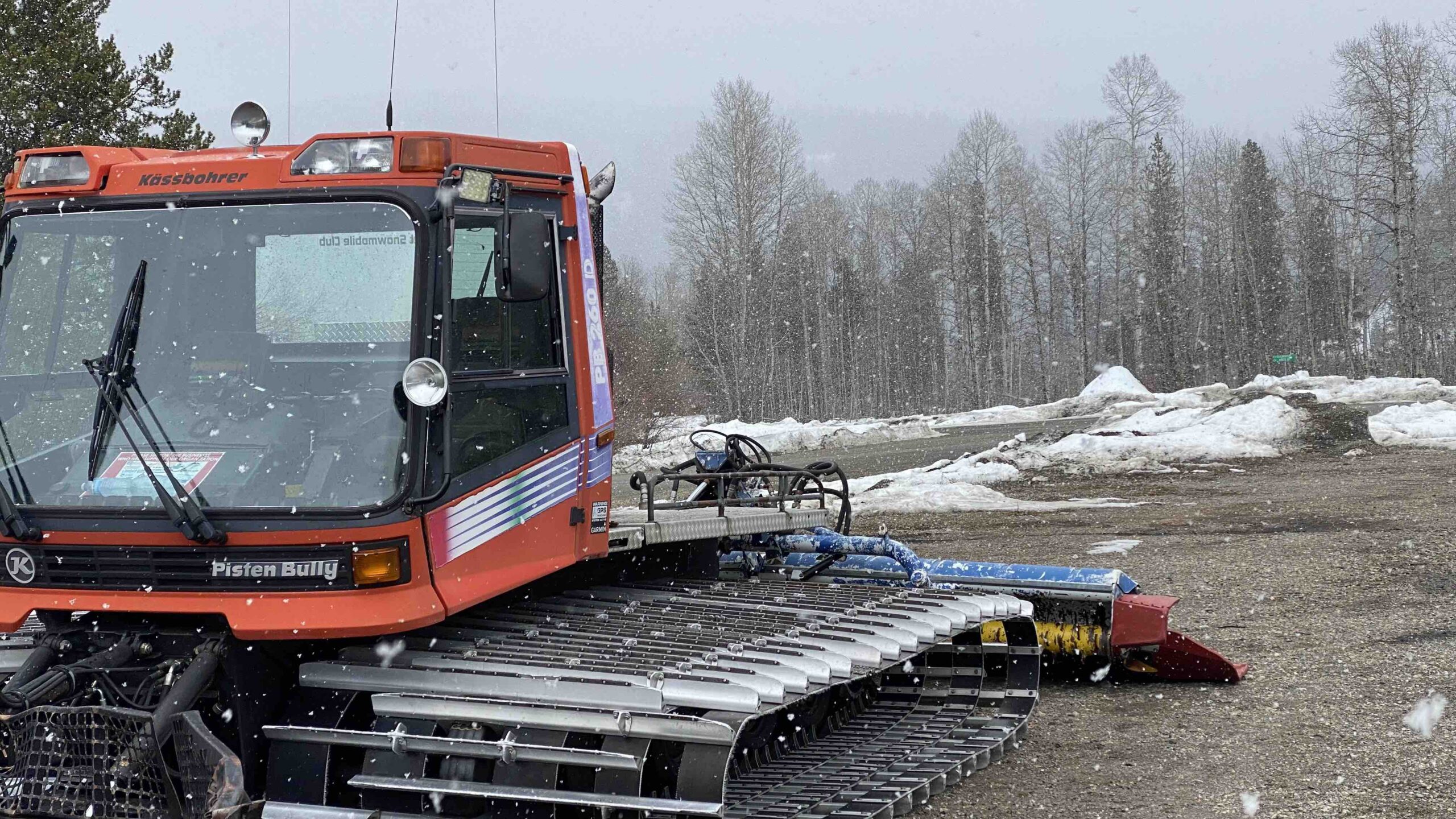FIND THE LATEST REPORTS ON GROOMER TRACKING
Thynne Mt Area Groomer Tracking
Find out when the groomer was last on Thynne Mt. Join us as we follow the guys on their trail-smoothing adventures. Our units are tracked thanks to the APRS Network, supported locally by the Kamloops Amateur Radio Club. This cool technology comes at no cost to the club, sending data over the radio with GPS location, speed, temperature in the cab, elevation, battery voltage, and movement status. We’ve expanded the network coverage by adding radio gear to our Webcam C-Can at Honeymoon. Sled Merritt brings you Thynne Mt Groomer Tracking.
Honeymoon Area Groomer Tracking
Find out when the groomer was last in the Honeymoon Area on Sled Merritt. We are seeking a replacement for this groomer, and your contribution to the club through this link can make a difference. By securing grants, we aim to acquire a low-hour groomer to ensure the reliability of our fleet and maintain smooth trails for years to come. In the meantime, we will continue to operate with our trusted old girl. You can follow along as the grooming crew is out live by clicking the picture above.
Support Groomer Funding
Fuel for Grooming 1/2 Day
- Support Fuel for a 1/2 of Grooming
- Smooth Trails
- Logo On Posts
- Get Shout Out On Socials
- Transaction Fee Not Included
Fuel for Grooming Full Day
- Support Fuel for a full day of Grooming
- Smooth Trails
- Logo On Posts
- Get Shout Out On Socials
- Transaction Fee Not Included
Grooming Ride Along
- Support Fuel for a full day of Grooming
- Come Ride In The Groomer
- Photo With Groomer
- Lunch Supplied
- Transaction Fee Not Included
Trail Quality and Set Up Time
Snowmobile trail grooming requires a ‘set up’ time whereby the freshly groomed trail can re-freeze. Therefore riders must understand that riding on freshly groomed trails during this essential set up time can quickly destroy the trail base, resulting in long-term rough trails. Set up time will vary depending upon temperature and moisture content of the snow. Generally, at least two to six or even more than ten hours may be needed for the freshly groomed trail to set up to where it is durable and can withstand heavy snowmobile traffic.
Respect the work trail groomer operators do by never following directly behind their grooming equipment, since it immediately destroys their work. If possible, try to avoid riding a snowmobile on freshly groomed trails for at least two hours after the groomer passes by either waiting or choosing an alternate route. Showing this respect can help improve the quality and durability, as well as the safety, of your snowmobile trails.
If you come upon a groomer working on the trails and absolutely must use that route, try to minimize your impacts by observing the following groomer etiquette:
- Slow down!
- Try to stay off the fresh grooming if the trail or adjacent area is wide enough to safely and legally do so
- Operate only at the far outside edge of the fresh grooming if your only option is to ride upon the newly groomed trail
- Keep your group in single file versus allowing everyone to take a different path on the fresh grooming
- Don’t be purposely disrespectful (and damaging) by intentionally fishtailing or powering through the soft snow
Understand that aggressive riding styles harmfully impact the quality and smoothness of the snowmobile trails you ride on—whether the trail is freshly groomed or not. Powerful engines, carbide runners, aggressive tracks, traction devices, fast starts and stops, and powering through curves all combine to destroy the smoothness of any snowmobile trail. So the next time you hit the brake or throttle, think about how you may have innocently (or purposely) contributed to destroying the trails you would really prefer to be smooth.
Etiquette for Encountering Trail Grooming Equipment
It is important to respect the work trail groomers do to smooth and restore the snowmobile trails you ride on to a safe condition. Recognize that groomers may be working on the trail at any time. Always keep your snowmobile under control and anticipate that a groomer could be around the next corner or over the hill—and they are a large, immovable object that will win should you collide.
Snowmobiles are much smaller and much more maneuverable than groomers, so always yield to trail grooming equipment. Always slow down when approaching or overtaking grooming equipment. Understand that groomers move very slowly—typically only 5 to 8 miles per hour—so they are almost stationary when compared to a snowmobile traveling 30 to 60 km per hour.
When approaching an oncoming groomer on the trail, slow down and move your snowmobile to the far right side of the trail. Realize that the grooming drag or tiller behind the grooming tractor is very wide, may extend wider than the tracks of the tractor, and may take up most or all of the trail’s width. If the trail is narrow or winding, you may need to stop at the far outside edge of the trail, or even off it, to allow the groomer to pass.
When overtaking a groomer from the rear, slow down and assess the situation ahead. If there is good sight distance and the trail ahead is clear of oncoming traffic, pass the groomer while operating with caution. Beware that the groomer may create snow dust and make visibility poor as you pass it. If the trail is narrow or winding, you may need to stay behind the groomer until the operator pulls over and signals for you to pass. Be patient since it may take quite a bit of time before there is a good location with sufficient room for you to safely pass.
If you need to stop a groomer to ask the operator for information or assistance, understand this should be done only in an area where there is good sight distance and is safe for it to stop. The groomer operator may instruct you to follow the groomer to a safer location where he can safely stop to provide the assistance you need.
What makes a great trail?
Do you want to know more about what goes into making a great trail?
Check out this article from the BCSF!
Groomer Funding
Securing funding for snow groomers is crucial to maintaining well-groomed and safe winter recreational areas enthusiast, sledding enthusiasts come to expect. These specialized vehicles play a vital role in preparing and maintaining snow-covered terrain, ensuring optimal conditions for sledders and tracked sxs units. Funding for snow groomers can come from a variety of sources, including government grants, private investments, day pass revenues, and partnerships with local businesses. These funding avenues help cover the significant costs associated with purchasing, operating, and maintaining snow groomers, as well as training personnel to operate them effectively. By investing in snow groomers, stakeholders contribute to the overall winter sports experience, boost tourism, and promote outdoor activities in our community.


